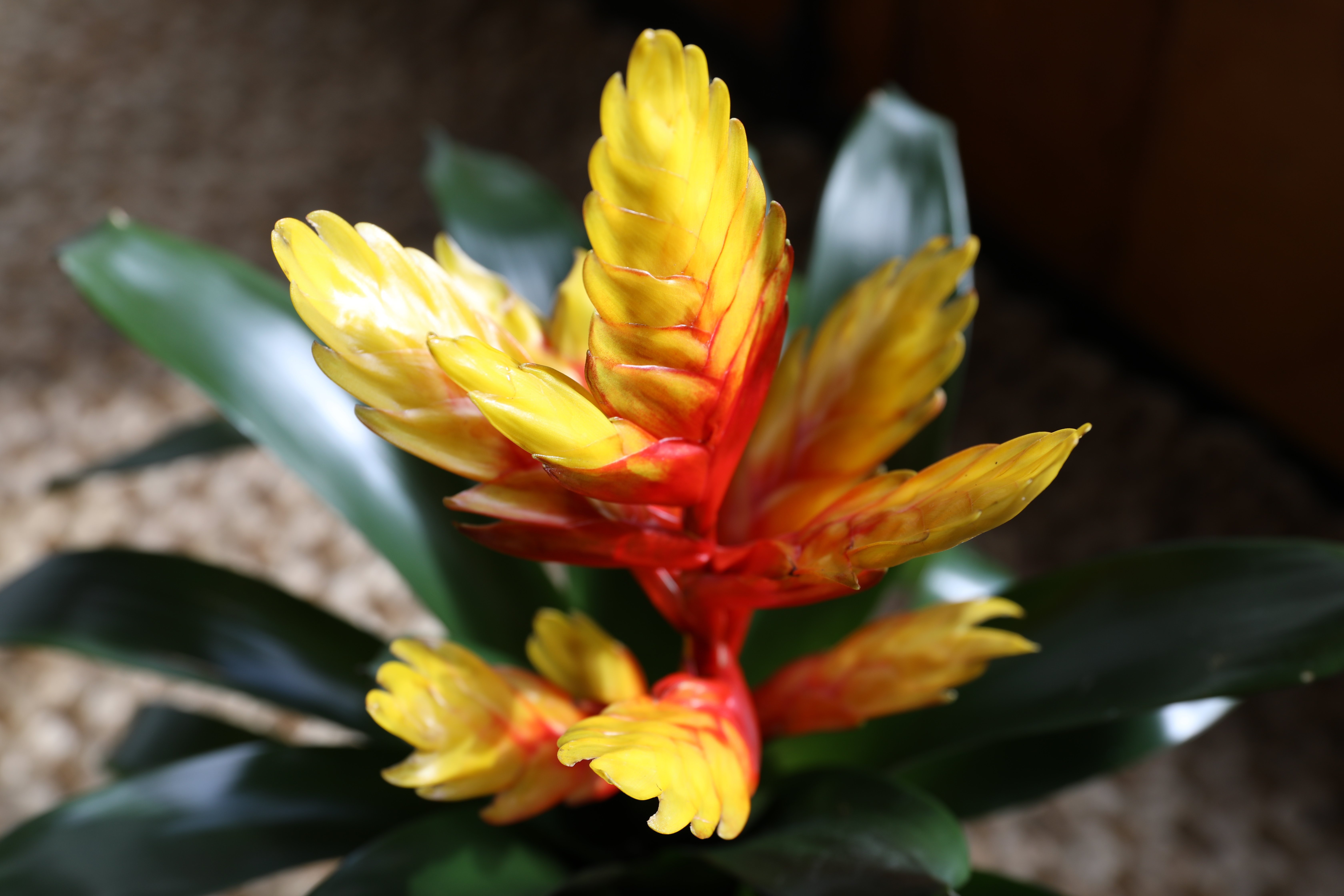
You brought home a beautiful, bright bromeliad and you want to make sure it stays beautiful for a long time in your home. While they are typically a plant with simple care, there are a few tricks to having success.
Before we dive into our care tips, let’s look at where bromeliads come from so you can better understand what they need.
Bromeliaceae is a wildly diverse family of plants found in coastal regions mostly. First, there are tank bromeliads, in the Vriesea and Guzmania genuses. They have bold, central blooms and absorb water in between their leaves. Next, there are terrestrial bromeliads, like Cryptanthus, and are relatively drought tolerant. Lastly, we have epiphytic bromeliads, which can survive without soil and often grow by clinging to tree trunks and branches. These include Tillandsia bromeliads, like Spanish moss!
Bromeliads love bright, indirect light. Make sure you display your bromeliad in a place where it will get as much indirect sunlight as possible, such as a mantel or kitchen table. If your bromeliad has leaves turning brown, it could be sunburned, so move it away from direct sunlight.
Since dry indoor air can have a negative effect on the tropical-climate loving bromeliad, you may have to take added precautions to make sure your plant is getting the proper level of humidity. You may want to consider running a humidifier to improve the atmosphere for your plant. You can also place your bromeliad in a bathroom, which naturally gets more humidity than other rooms in your home.
The temperature of the room where you place your bromeliad should remain above 65 degrees F. However, it’s also important to make sure you don’t display your bromeliad in an area of your home that is especially drafty—like near a door that is constantly opening to the outside. Take care to avoid positioning your bromeliad near vents or fans as well.
Overwatering is always detrimental to the health of your bromeliad. You should always keep water in the “leaf cups” of the bromeliad to make sure it is getting enough water but pay close attention to the dampness of the potting soil to make sure overwatering doesn’t become a problem. Unlike many other plants, bromeliads get their nutrients from their leaves, not roots. So, make sure to pay attention to how they respond to your watering routine.
It is easy to get discouraged when you see the flowers of your bromeliad begin to fade after a few months, with the rest of the plant eventually following. This is a normal part of the bromeliad life cycle! Bromeliads have a lifespan of about 2 to 5 years, and by the time they reach your home, they are fully mature and flowering. While they are flowering, they are also beginning the process of producing offspring, called pups. Once the mother plant puts the rest of her energy into the pups, they can be removed and potted into their own pots. So, while bromeliads will not live forever, you can keep many generations of the same plant!
Pups can be challenging, especially for those new to growing them. Don’t be discouraged and just follow a few easy steps to ensure you see the most success.
1. Remove your bromeliad from its pot and place it on a flat surface.
2. Using a sharp, sterile knife, cut the bromeliad pups away from the main plant.
3. Remove any dead or damaged leaves.
4. Fill a new pot with potting mix and place the bromeliad pup inside.
5. Keep the pup in a warm, humid environment and always keep water in the leaf cup.

Copyright Just Add Ice® Orchids 2023